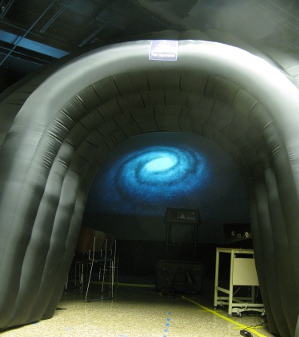
The Department of Astronomy and Astrophysics has a planetarium that can seat up to 25 people. The dome is an inflatable structure made by The Elumenati.
Unlike more traditional planetariums that use an opto-mechanical projector, we use a digital projector to generate the images of sky. The digital projector gives us much greater freedom in what we can show. We have paired the digital projector with powerful software called Uniview. Uniview is based on NASA's Digital Universe, which is a three dimensional atlas of the universe.
